BIOcean5D is dedicated to the exploration of marine life and how it changes with space, time and human impact. This ambition extends beyond the generation of knowledge to include its integration with society. We work to promote citizen engagement, contribute to the development of an ocean-literate society and raise public awareness about the absolute importance of our Ocean and the major threats to marine biodiversity. This is achieved through actions such as our artists-in-residence program and public outreach and engagement activities, thanks to collaboration with the Tara Ocean Foundation, EMBRC and local partners.
The Curiosity microscope, developed by Noan Le Bescot of SeaLabX within the framework of Plankton Planet, is an invaluable tool for the achievement of these ambitions. Small, simple and user-friendly, it enables detailed images to be captured of the diverse and vibrant forms of microscopic life in aquatic ecosystems. Within the framework of BIOcean5D, and in collaboration with the Tara Ocean Foundation, Curiosity microscopes were distributed to local partners at key locations along the TREC – Tara Europa expedition route. These microscopes will facilitate, support and expand existing outreach activities for local coastal communities.
Developing an awareness and understanding of our Ocean is equally important for inland communities. Rivers provide a direct connection to our Ocean and numerous similarities exist between freshwater and marine plankton. With our partners at EMBL, BIOcean5D is thus working with the team at Plankton Planet to bring Curiosity microscopes to high schools across Europe. With training sessions and a suite of learning materials, science teachers are empowered to share the invisible world of our Ocean, rivers and lakes with their students.
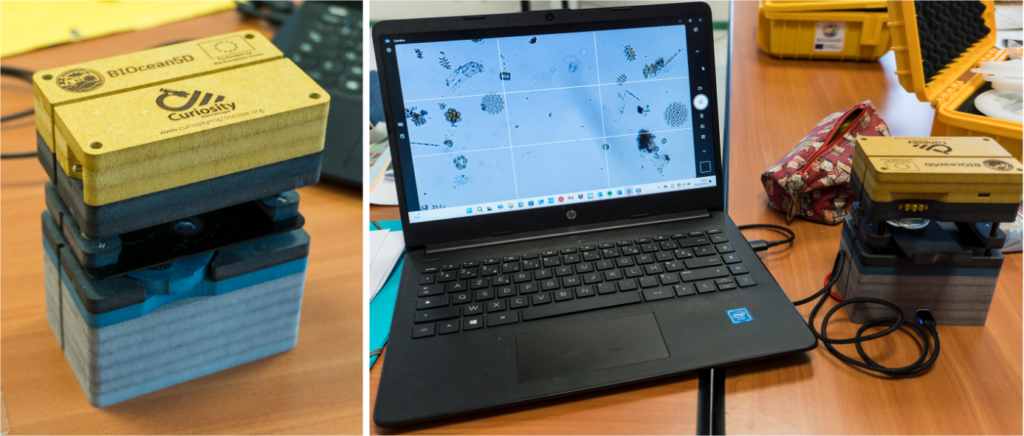
After a first successful workshop at EMBL Heidelberg, teachers from three French high schools were welcomed at EMBL Grenoble in October 2024 to receive Curiosity microscopes and training through Plankton Planet with Sahima Hamlaoui. We caught up with them to discover their plans.
Joseph Fontanet Collège includes a pond that science teachers at the school have been sampling and observing in class for years. “Quite often our students don’t manage to see much due to the limited zoom and difficulty adjusting our microscopes,” explain teachers Vanitha Dovis, Corinne Jaillet and Fabienne Matrod. “In comparison, the Curiosity microscope is much more accessible: it’s easier to use and provides an image that is clearer and more detailed. The screen is also a real advantage as it enables observation as a group rather than individually.” Having brought a sample from the pond to observe during the workshop, the teachers left with not only the means to observe but also additional knowledge to more comprehensively identify the pond’s planktonic life.
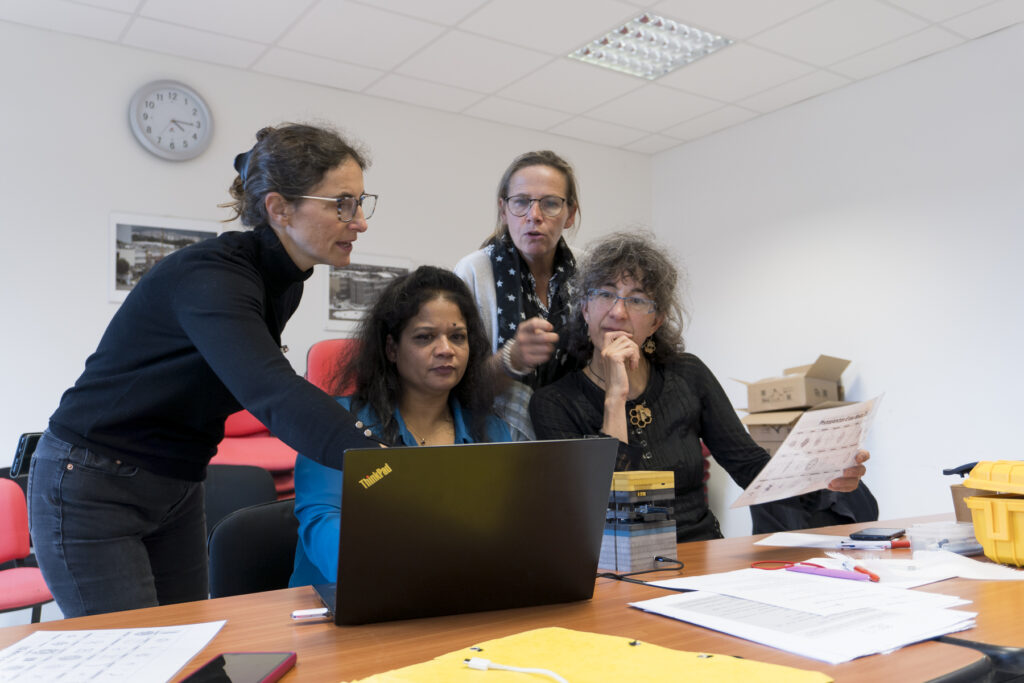
In addition to complementing existing activities, the Curiosity microscope is also inspiring the creation of entirely new teaching experiences for students. Despite the proximity of Louis Lachenal Lycée to Lake Annecy, students have limited awareness and understanding of the lake’s ecosystem that is brimming with microscopic life. “As we learn more about the Curiosity microscope, we’ll develop our ideas into concrete projects that enable the students to discover the diversity and beauty of the microorganisms present in the lake, contribute to citizen science initiatives and learn about how environmental changes impact the underwater life of lake ecosystems,” explain teachers Michel Collomb and Elsa Orfeuille. “We’re not far from the INRAE laboratory dedicated to the study of lake ecosystems at Thonon-les-Bains. We’d like to organise a class trip to the laboratory, combined with the collection of samples from Lake Geneva to explore both while we’re there and later in class.”
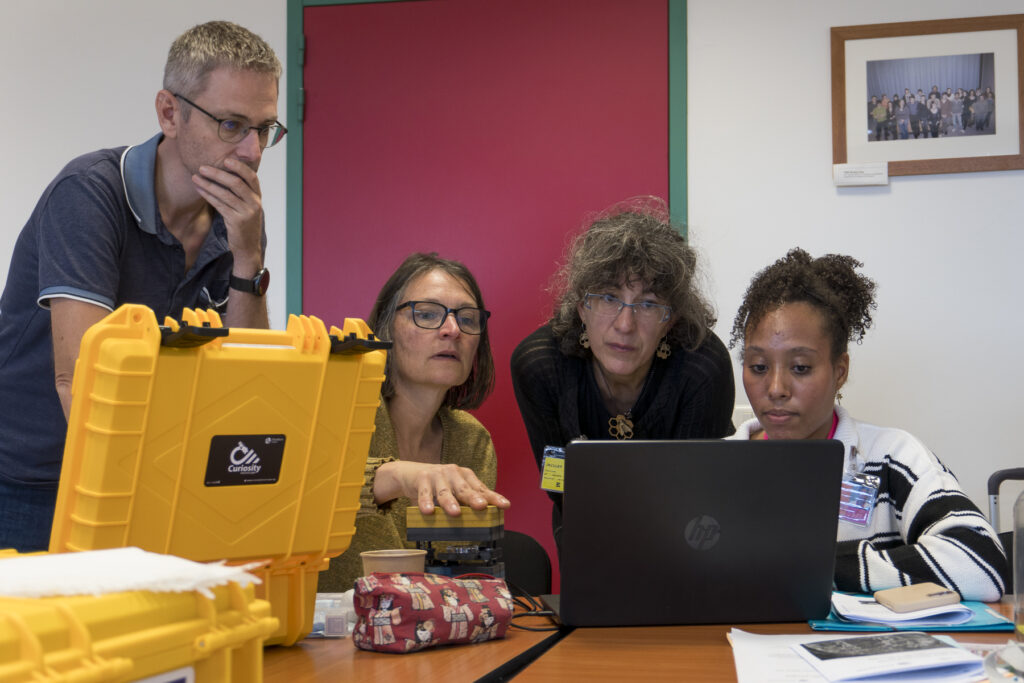
Indeed, the portability of the microscope is an advantage highlighted by all teachers at the workshop. “Up until now, we’ve brought samples from nearby lakes to the classroom to study. The Curiosity microscope is fantastic because it will enable us to do the opposite and bring the classroom to the sampling site,” explain the teachers from Joseph Fontanet Collège. “The students love these field trips and they’re very interested to discover and observe the invisible microorganisms present and moving in the samples we’ve just collected together.”
The teachers present at the workshop already have plans to integrate the Curiosity microscope into activities beyond the realm of science. “There is a very strong link between science and English and we’ll use the Curiosity microscope to enrich our English classes,” explains Gaelle Loiodice, English teacher at Joseph Fontanet Collège. “For example, our students prepare a presentation in English each year about reducing pollution. The Curiosity microscope will enable additional topics to be covered, such as microplastics in water.”
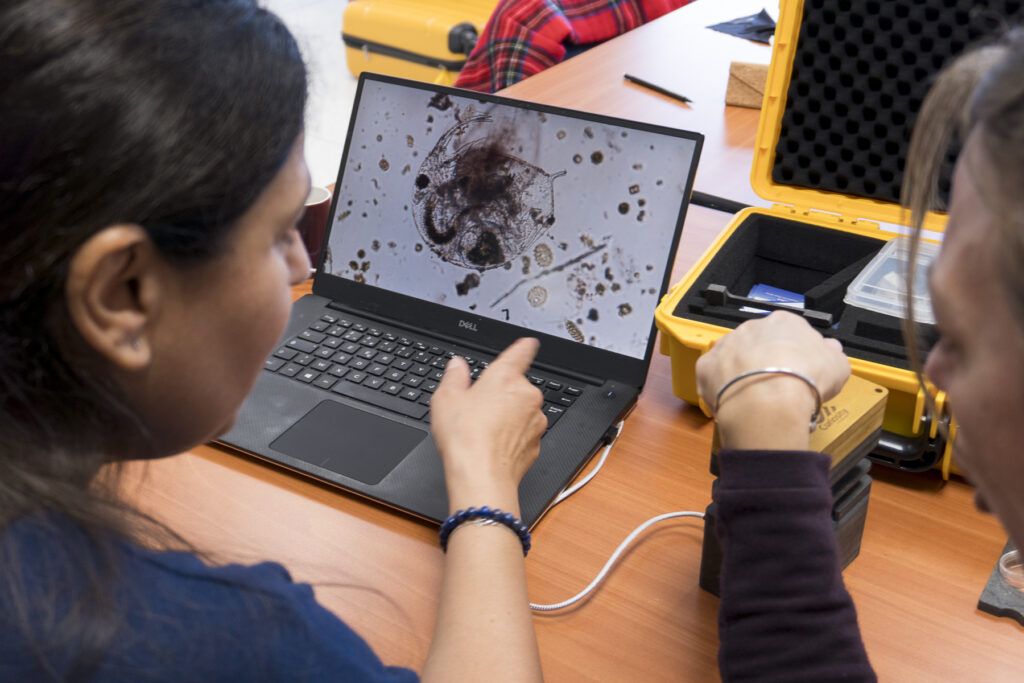
At Collège Val Gelon, the project ‘Water, a precious resource’ brings teachers together from science, history, geography, art and sport. “There are many different ways in which the Curiosity microscope can complement this project,” explain teachers Carole Moncenis Chonchon and Sebastien Casagrande. “It can be used to observe samples collected from water catchments during sports outings, or from the nearby Saint-Clair Lake that students already visit during science class to observe frogs migrating.”
The distribution of Curiosity microscopes was made possible thanks to the assistance provided by Geneviève Baret, in charge of Education in Sustainable Development and International Solidarity (EDD-SI) for the Grenoble Board of Education. “The Curiosity microscope supports the aims and objectives of the EDD-SI and will make an invaluable contribution to teaching about sustainability, from better understanding microorganisms to the impact of microplastic pollution on biodiversity,” explains Marie-Sylvie Dhénin and Flora Servel, representatives at the workshop from the EDD-SI, Grenoble Board of Education.
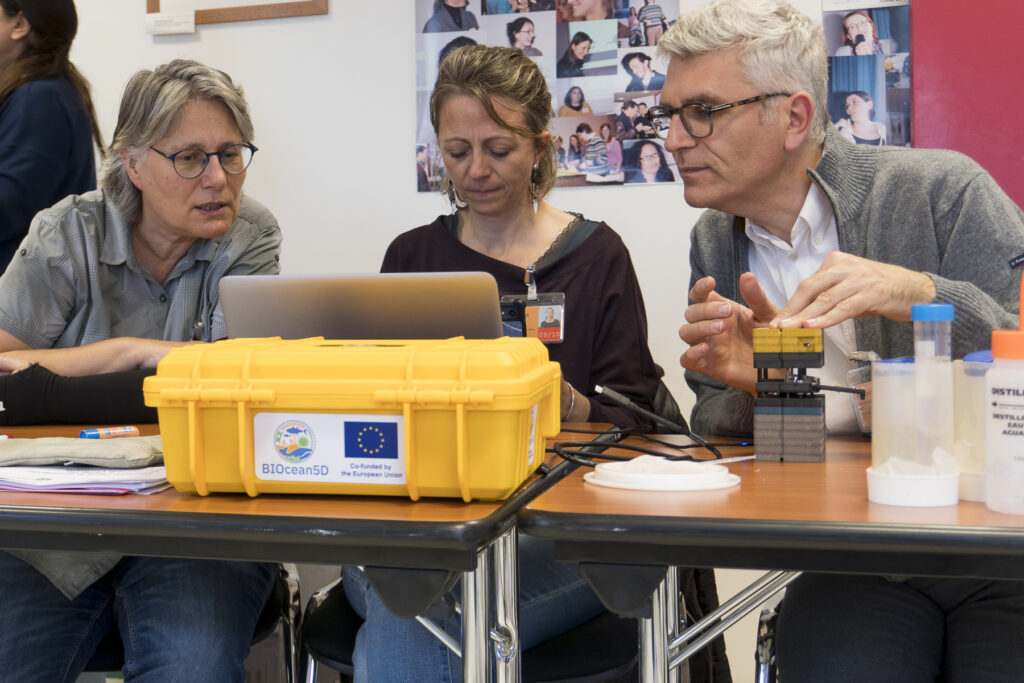
Thank you to all the teachers who participated for their enthusiasm and ideas, to Sahima Hamlaoui and Plankton Planet for another successful training session, to Efraim Culfa for the organisation that made it all happen and EMBL Grenoble for hosting the workshop and their warm welcome!
Keep tuned for the next Curiosity microscope workshop coming soon in Spain!
Acquisition of the Curiosity microscopes distributed to high schools throughout Europe was made possible thanks to the support provided by the Tara Ocean Foundation.